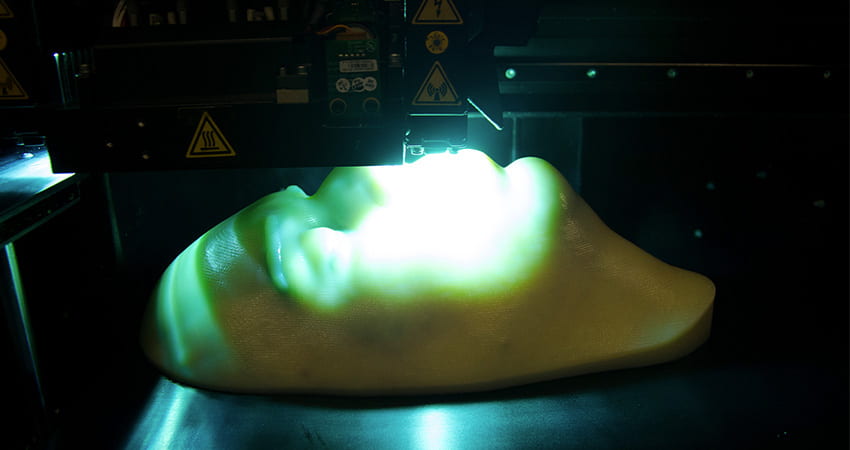
LaGuardia Studio Staff Contend With a Blizzard and Sleeplessness to Contribute to a Face Transplant Operation
By Keith Allison.
Photos by Taylor Shields, Andrew Buckland, and Shelly Smith
This article is a follow-up to “From LaGuardia Studio to NYU Langone Health,” which detailed the process of preparing for and performing the scanning and printing for a human face transplant.
It was January 3, 2018. Much of the northeast was bracing for a blizzard. New York City Mayor Bill de Blasio issued alerts on the closing of city’s public schools. The MTA and Metro North rail lines were putting severe weather plans into effect. NYU President Andrew Hamilton announced that the University would be closed. As NYU’s faculty, students and administrators were trying to get home in advance of the storm, Shelly J. Smith, Assistant Director of the NYU LaGuardia Studio (LGS), and her colleagues, LaGuardia Studio Manager Andrew Buckland and senior staff member Taylor Shields, stayed put.
Since late October, the LGS team had been on standby for a call to execute their part in a complex, time-sensitive project — a face transplant operation to occur at NYU Langone Health, performed by Eduardo D. Rodriguez, MD, DDS, chair of NYU Langone’s Hansjӧrg Wyss Department of Plastic Surgery and director of its Face Transplant Program. Each day, the LGS team would conduct a daily review of all the systems they would need, including a 3D scanning “go bag.” By 7pm, all systems had been checked and deemed in order. In the absence of any news, they headed home, hoping to beat the storm.
And then the text message came, just as Smith and Buckland were arriving at their respective homes in the Hudson Valley. So they bundled back into their coats, caught the next train south, and met Shields at the LaGuardia Studio to do a final equipment check, collect their gear, and depart for the hospital. As they walked out the front door of the Studio to begin the project that would keep them awake, fueled by nothing but instant coffee, for the next 34 hours, the first snow began to fall.
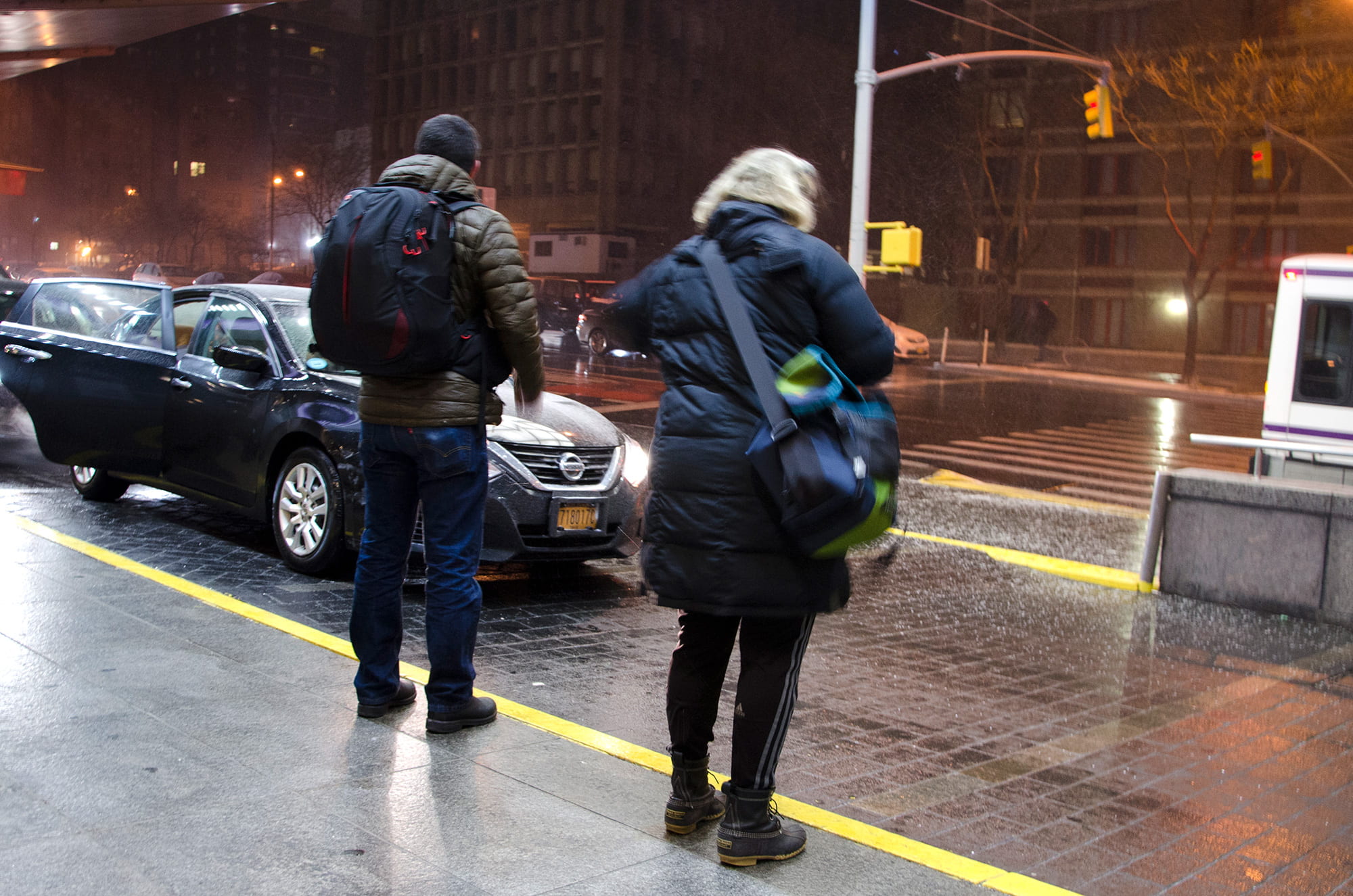
At the Studio and the Hospital
The message Smith, Buckland, and Shields received at approximately 8pm was from G. Leslie Bernstein, Chief Administrator for the Face Transplant Program at NYU Langone Health. “Happy New Year,” it read. “We have a donor identified and a green light for the transplant.” It was time for the LGS team to play the part for which they’d been preparing for months, both professionally and emotionally.
The team knew they had to act quickly — a feat that was going to be challenging with a blizzard bearing down on the city. Starting at 6pm, doctors had been performing tests to assure that the donor and the recipient were compatible while LiveOnNY representatives consulted with the donor’s family. As Buckland and Smith made their way back to the city, Shields, who lives in Manhattan, rushed to the LaGuardia Studio to check and recheck the equipment that would be involved. Smith and Buckland soon joined Shields. The team was ready. Everything worked. They knew everything worked. But as tension mounted, it seemed like one more check of the printers couldn’t hurt.
“If they shined after we checked them,” says Smith, “they really shined after the 20th time we checked them.”
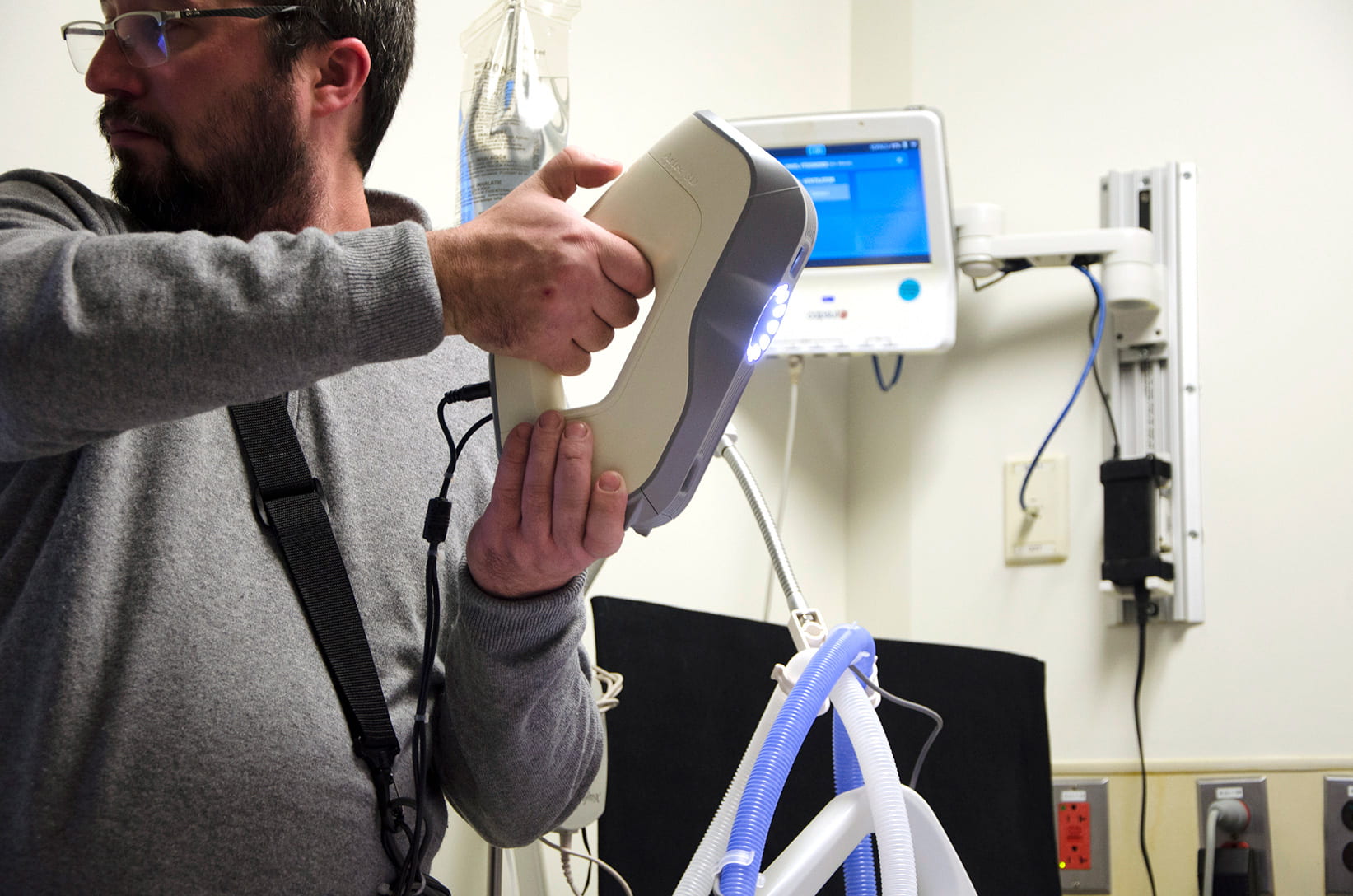
Around 10pm, the donor, 23-year old Manhattan resident William Fisher, was transferred to NYU Langone. The LGS team was uncertain what time they would be performing their scanning, but by 11:30pm, deteriorating weather conditions convinced them it was more prudent to finish the wait at NYU Langone than gamble on taking a car service during a blizzard. David Ackerman, Associate Vice President of Research Technology (the NYU IT unit under which the LaGuardia Studio operates), was monitoring the situation and proclaimed that if cars were hard to come by, then he would call the NYPD and get his team a police escort to the hospital and back to LaGuardia Place. “Whatever it took,” Ackerman remarked.
It didn’t take the NYPD. The LGS team arrived at NYU Langone at 11:45pm. Unfortunately, while the bag they brought with them had everything they’d need to successfully complete the scan of the donor, it didn’t contain one seemingly trivial but surprisingly important item: caffeinated products. “We blew through everything we brought to the hospital by 1am,”said Smith, “which meant we were in deep regret of that by 5am.” LGS staff had to resort to the hospital’s seemingly endless supply of instant coffee to keep themselves awake. Smith added, “We won’t ever make that mistake again.”
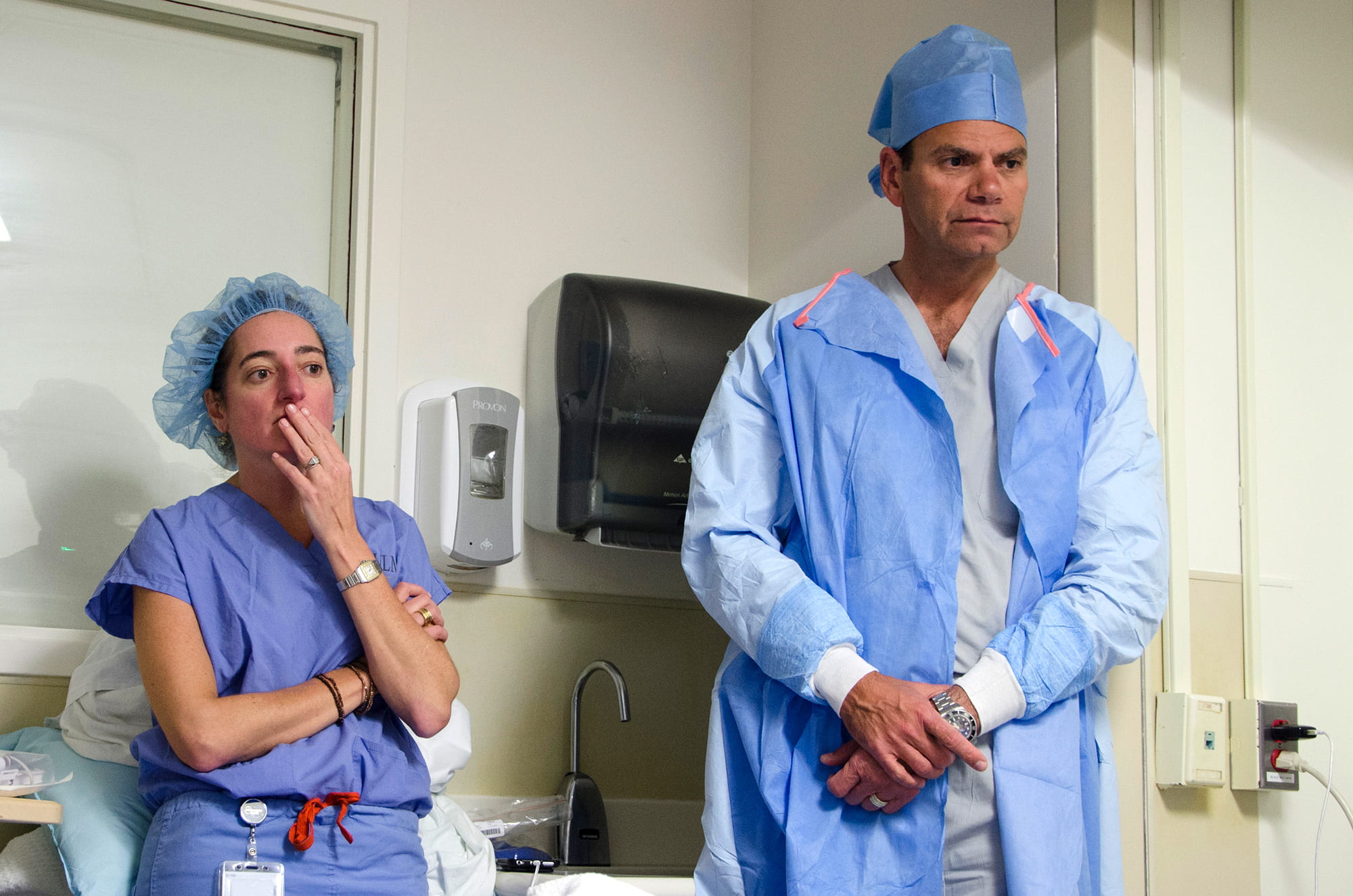
Just after 5am on January 4, as the blizzard raged outside, the LGS team got the OK to begin scanning. With scans acquired, the trio headed back out into the snowstorm and to the LaGuardia Studio in what Smith described as the “worst car ride of my life.”
Dr. Rodriguez prepared for the laborious process of performing the transplant, to take place early in the morning on January 5th, while at the LaGuardia Studio, Buckland began combining the scans and photos into a final model. It is a time-consuming, complex task that requires expertise and artistry to analyze each scan and compile them into a single 3D model. It includes, among other things, digitally manipulating the scans to create a more natural facial position. The scans also have to be refined to match specific measurements, contours, thickness, and cuts defined by Dr. Rodriguez that would enable him to affix the finished mask to the donor as quickly as possible post-procurement.
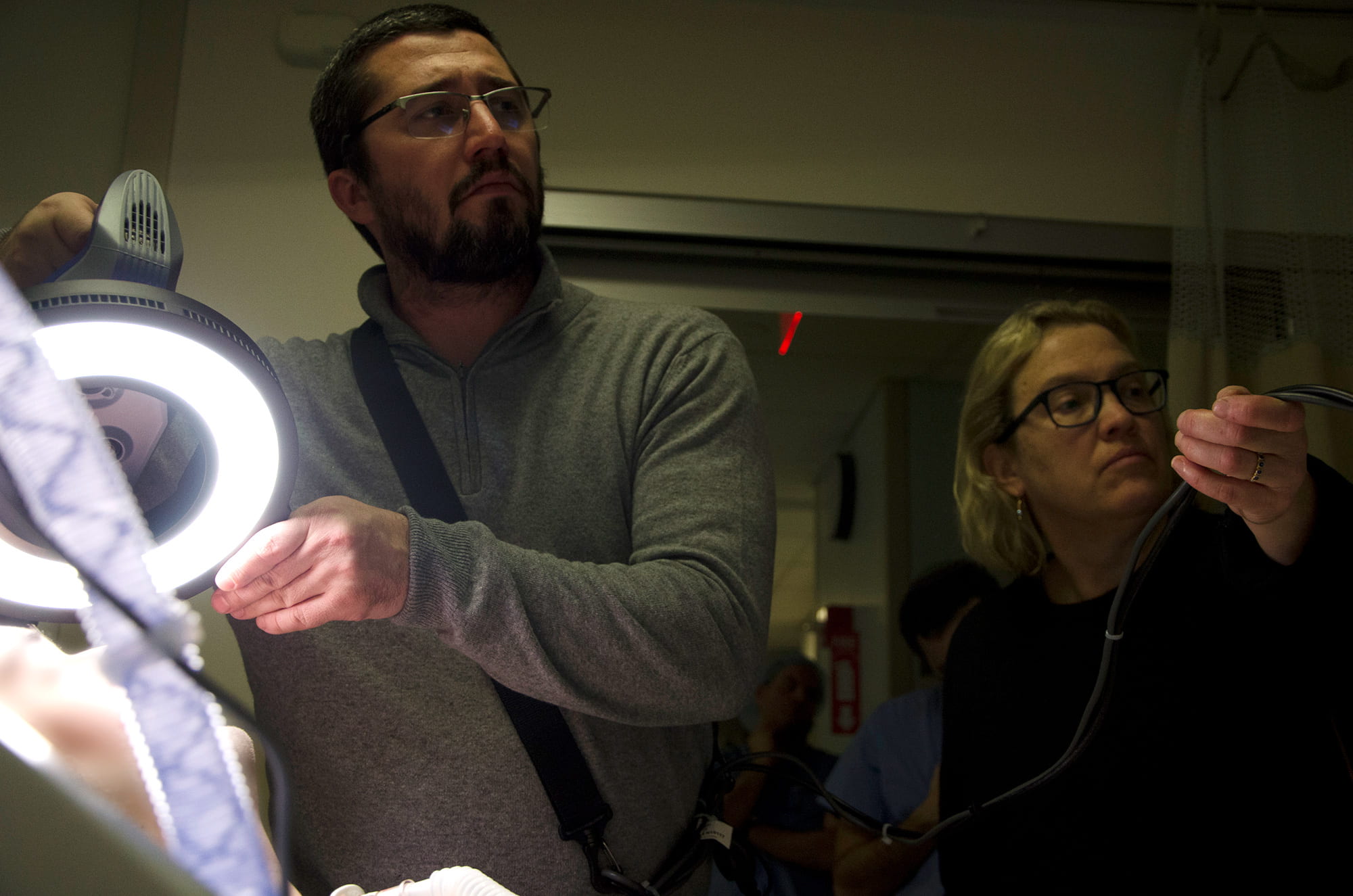
Recovery and Reflections
After the final geometry was created, the photographs were used as a color reference to finish the texture map applied to the 3D model. Once complete — a process that ran roughly from 6am until 11am on January 4 — the model of the mask was verified and ready to be 3D printed. And then Smith, Buckland, and Shields were ready for sleep. Including the regular day at the Studio they’d put in on January 3, they’d been awake and focused for 34 hours.
The team took turns catching a few hours of shut-eye while others monitored the printer and ensured everything was going as planned. Twenty-four hours later, the meticulously-crafted mask was complete. The final result was a rigid but highly-detailed, lifelike recreation of the donor’s face. The mask was then delivered to Dr. Rodriguez and his team at NYU Langone where it was placed on the donor, whose face had now given the recipient the chance at a recovery previously impossible. For the recipient of the donated face, California resident Cameron Underwood, a process of recovery and physical therapy began the next day.
On November 29, 2018, Dr. Rodriguez and his team were happy to announce publicly the success of the transplant. Dr. Rodriguez’ first transplant patient, firefighter Pat Hardison, spent 62 days in the hospital recovering from the procedure. Reflecting significant advances in the operation, Underwood was out of the hospital in just 37 days. For Smith, Buckland, Shields and the LaGuardia Studio, it was an experience unlike any they’d had before, and one they are looking forward to participating in again.
Added David Ackerman: “I couldn’t be more pleased with the successful collaboration between NYU IT and NYU Langone Health. Our Studio has been innovating for many years, but this work really stands out as a special achievement. And the fact that we got the job done during a blizzard: outstanding!”


